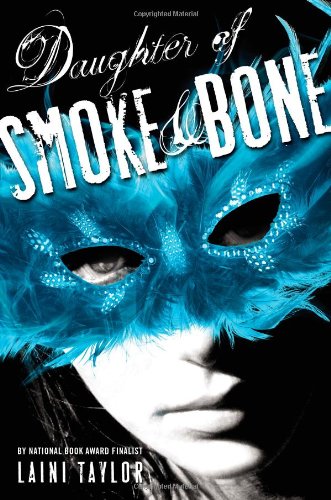So this week we are going to be joined again by the lovely Killian McRae. She is a fantastic writer and graciously agreed to write a guest post as part of the blog tour for her new release. So, without any further adieu:
A Little Piece of Hidden History: A Love by Any Measure Tour Feature; or How there could have been a shamrock
on the Canadian flag
Anyone who’s
studied history knows the trajectory of an oppressed people. Tyranny is a great
heavy boulder and weighs heavily on those trapped beneath it. Yet, with time
and fortitude, an oppressed people, if they do not perish, coalesces. Their
pride becomes unfathomable, their traditions are guarded and passed along like
mother’s milk, nurturing the children of each new generation. A language
outlawed becomes a language of conspiracy, then, revolution. The people are boiled down in to the toughest,
most enduring characteristics of their lot. They grow strong in their weakness.
They grow determined through their weariness. They forge hope in their despair.
And then
they invade Canada.
In the
passing of time, such tales often get swept to the wayside. A Love by Any Measure, set in Killarney,
Ireland in the 1860’s, uses a true historical backdrop in which Irish-English
tensions were again, as they had done for decades before and would continue to
do for well over another century, reaching a boiling point. But to be honest,
it’s the part of Fenian uprising not in
the book which is more interesting.
Firstly,
“Fenians, you say? What the Jim Dandy is that?” The Fenians were the Irish
nationalist of the eighteenth and nineteenth centuries. The term refers to both
group within Ireland and abroad who
sought to regain Ireland’s sovereignty from the British.
The famine
of the 1840’s and 1850’s had left the Irish population ravaged and reduced. It’s
estimated that one-quarter (two million people) of the native population
perished or immigrated in search of a sustainable environment and way of life.
When these immigrants headed out to foreign lands, they brought the love of
Ireland with them. Though an attempt to take Ireland back from the English in
1848 had failed, these immigrants began to build up the national movement again
in the American cities to which they immigrated. The plans were made: the
people in this new land would grow strong and form ranks. Bonds were issued to
raise funds, bonds issued out in the name of a free Ireland that did not yet
exist. Hundreds of thousands of Irish immigrants leant their support. The Fenian Brotherhood was reborn.
With the
start of American civil war, Irish immigrants found themselves in the ranks of
the armed on both side of the battle (though the majority fought for the North,
where the highly plentiful number of factory jobs had drawn them). In the
meantime, the famine back home had passed. Ireland was beginning to stabilize
and in some ways, prosper. The Brotherhood began sending fingers back to Irish
soil. The plan: take the highly-organized structural apparatus of the U.S.
Brotherhood, and begin to reweave it into pockets of support throughout Ireland
itself. Small groups known as Circles began to form ranks in cities such as
Cork, Dubln and Killarney, as seen in A
Love by Any Measure). The Fenians in Ireland would revolt when the time was
right, and the U.S. Brotherhood would be ready to funnel back financial,
military, and diplomatic support.
As the American
civil war drew to a close in the mid 1860’s, thousands of Irish would be
released from armed duty, now trained and seasoned in the ways of battle. Yet,
the Ireland-based Circles were proving lax in getting to a launch-ready state.
With the close of the war, a trained Irish army sat on American soil, without
any battle to send it to. Justice-hungry Irish soldiers longed to avenge their
nation against the English. Then they looked north and saw British-controlled
Canada.
Though, to
be clear, Canada wasn’t yet Canada. In 1866, it had yet to gain its
independence. But to a rowdy and ready bunch of Fenian soldiers chomping at the
bit, the stand-in became a viable point of attack. In April 1866, the invasion
was launched (with the support by way of non-opposition by the United States,
who were still holding grudges from the American revolution and following skirmishes).
It was believed that if the invasion was successful, Canada was a more highly
prized possession than little Ireland, and that the Fenians would be able to
exchange with Britain control of Canada for freedom for the Ireland.
Ultimately,
however, the disjointed Fenian invasion fizzled when American support turned
against their efforts. The British forces based in Canada proved too awesome a
force for them to counter and outnumbered them by tenfold, as well. By early
June 1866, less than three months after the initial sweeps across the border,
the Fenians uprising in the United States was squashed. Ultimately the next
spring, similarly-styled uprisings in Ireland organized by the movement would
meet even quicker ends. Ireland would not taste freedom for decades more, but
the seeds of the nationalistic movement had taken firm root, leading to later populist,
anti-British movement such as the Irish Republican Army.
Author website:
www.killianmcrae.com
Author Blog Site:
authorkillianmcrae.blogspot.com
Goodreads book link:
http://www.goodreads.com/book/show/11114777-a-love-by-any-measure
Amazon book link (Kindle/Paperback now available):
http://www.amazon.com/Love-Any-Measure-Killian-McRae/dp/0983979707/ref=sr_1_1?ie=UTF8&qid=1319660277&sr=8-1
BN book link (Paperback now available, Nook coming soon):
http://www.barnesandnoble.com/w/a-love-by-any-measure-killian-mcrae/1105813192?ean=9780983979708&itm=1&usri=killian%2bmcrae






























